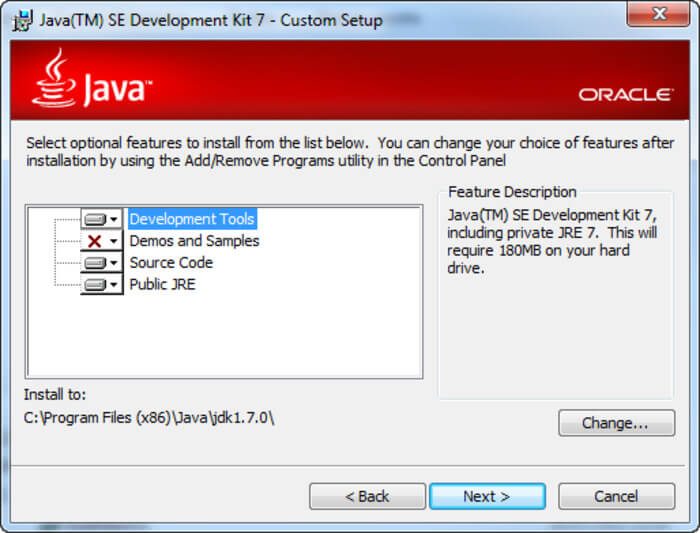This topic includes the following sections:
System Requirements for Installing the JDK on macOS
Eclipse OpenJ9 is the VM from the Eclipse community. It is an enterprise-grade VM designed for low memory footprint and fast start-up and is used in IBM’s JDK. It is suitable for running all workloads. For more details see Eclipse OpenJ9. LTS (Long Term Support). These versions have a longer support timeframe. Suitable for enterprise customers. This is the fastest way to get started with BIRT on Windows, Linux, or Mac. This download includes everything you need to start creating BIRT designs, including the full Eclipse SDK. Pre-requisites: Java 1.7 JDK/JRE.
The following are the system requirements for installing the JDK on macOS:
Any Intel-based computer running macOS.
Administrator privileges.
You cannot install Java for a single user. Installing the JDK on macOS is performed on a systemwide basis for all users. Administrator privileges are required to install the JDK on macOS.
Determining the Default JDK Version on macOS

When starting a Java application through the command line, the system uses the default JDK.
You can determine which version of the JDK is the default by entering java -version in a Terminal window. If the installed version is 11 Interim 0, Update 0, and Patch 0, then you see a string that includes the text 11. For example:
To run a different version of Java, either specify the full path, or use the java_home tool. For example:
$ /usr/libexec/java_home -v 11 --exec javac -version
Installing the JDK on macOS
- Download the JDK
.dmgfile,jdk-11.interim.update.patch-macosx-x64.dmg.Before the file can be downloaded, you must accept the license agreement.
- From either the browser Downloads window or from the file browser, double-click the
.dmgfile to start it.A Finder window appears that contains an icon of an open box and the name of the.pkgfile. - Double-click the
JDK 11.pkgicon to start the installation application.The installation application displays the Introduction window. - Click Continue.
- Click Install. A window appears that displays the message: Installer is trying to install new software. Enter your password to allow this.
- Enter the Administrator user name and password and click Install Software.The software is installed and a confirmation window is displayed.
.dmg file if you want to save disk space. Uninstalling the JDK on macOS
You must have Administrator privileges.Note:

Do not attempt to uninstall Java by removing the Java tools from /usr/bin. This directory is part of the system software and any changes will be reset by Apple the next time that you perform an update of the OS.
- Go to
/Library/Java/JavaVirtualMachines. - Remove the directory whose name matches the following format by executing the
rmcommand as a root user or by using thesudotool:/Library/Java/JavaVirtualMachines/jdk-interim.update.patch.jdkFor example, to uninstall 11 Interim 0 Update 0 Patch 0:
$ rm -rf jdk-11.jdk
Installation FAQ on macOS Platform
This topic provides answers for the following frequently asked questions about installing JDK on macOS computers.
1. How do I find out which version of Java is the system default?
When you run a Java application from the command line, it uses the default JDK. If you do not develop Java applications, then you do not need to worry about this. See Determining the Default JDK Version on macOS.
2. How do I uninstall Java?
See Uninstalling the JDK on macOS.
3. After installing Java for macOS 2012-006, can I continue to use Apple's Java 6 alongside the macOS JDK for Java 11?
If you want to continue to develop with Java 6 using command-line, then you can modify the startup script for your favorite command environment. For bash, use this:
$ export JAVA_HOME=`/usr/libexec/java_home -v 11`
Some applications use /usr/bin/java to call Java. After installing Java for macOS 2012-006, /usr/bin/java will find the newest JDK installed, and will use that for all of the Java-related command-line tools in /usr/bin. You may need to modify those applications to find Java 6, or contact the developer for a newer version of the application.
4. Can I restore Apple Java after uninstalling Oracle Java?
Jdk For Eclipse Mac Os
Go back to Apple Java using the following instructions:
Uninstall Oracle Java by deleting the plug-in file. From a command-line, enter:
$ sudo rm -rf '/Library/Internet Plug-Ins/JavaAppletPlugin.plugin'Create a symlink using the following command, entered on a single line:
$ sudo ln -s /System/Library/Java/Support/CoreDeploy.bundle/Contents/JavaAppletPlugin.plugin '/Library/Internet Plug-Ins/JavaAppletPlugin.plugin'
5. What happened to the Java Preferences app in Application Utilities?
The Java Preferences app was part of the Apple Java installation and is not used by Oracle Java. Therefore, macOS releases from Apple that do not include Apple Java will not include Java Preferences.
Join the DZone community and get the full member experience.
Join For FreeEclipse 3.6 (aka Helios) will run on OpenJDK on Mac when it's released this year. This will free us from Apple's oft-criticized and historically slow release cycle of the Java VM.
With a little persistence and help from some committers at Eclipse, the most glaring problems were resolved:
- bug 276564:Eclipse won't launch using JDK 7 because SWT native libraries don't load
- bug 276763: [launcher] launcher fails to use OpenJDK-based VM when -vm is specified
If you're interested in trying it out, you'll need to get an integration build of Eclipse (see 3.6 Stream Integration Builds) I20100119-0800 or newer, or a nighly build N20100117-2000 or newer. Prior to these builds, running Ecilpse on OpenJDK on a mac was only possible with some trickery. You'll also need a working OpenJDK on your mac, which can be built from source using these instructions, or installed using mac ports.
Many thanks to the Eclipse team for helping, notably Andrew Niefer, Mike Wilson, Kevin Barnes, Grant Gayed, Felipe Heidrich, Thomas Watson, Steve Northover and Silenio Quarti
From http://greensopinion.blogspot.com
Jdk For Eclipse Mac Download
Opinions expressed by DZone contributors are their own.
